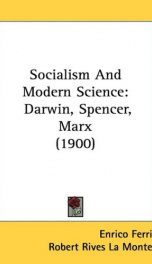The Positive School of Criminology

Purchase of this book includes free trial access to www.million-books.com where you can read more than a million books for free. This is an OCR edition with typos. Excerpt from book: II. We saw yesterday in a short historical review that the classic cycle of the science of crime and punishment, originated by Cesare Beccaria more than a century ago, was followed in our country, some twenty ears since, by the scientific movement of Ihe positive school of criminology. Let us see today how this school studied the problem of criminality, reserving for tomorrow the discussion of the remedies proposed by this school for the disease of criminality. When a crime is committed in some place, attracting public attention either through the atrocity of the case or the strangeness of the criminal deedfor instance; one that is not connected with bloodshed, but with intellectual fraudthere are at once two tendencies that make themselves felt in the public conscience. One of them, pervading the overwhelming majority of individual consciences, asks: How is this? What for? Why did that man commit such a crime? This question is asked by everybody and occupies mostly the attention of those who do not look upon the case from the point of view of criminology. On the other hand, those who occupy themselves with criminal law represent the other tendency, which manifests itself when acquainted with the news of this crime. This is a limited portion of the public conscience, which tries to study the problem from the standpoint of the technical jurist. The lawyers, the judges, the officials of the police, ask themselves: What is the name of the crime committed by that man under such circumstances? Must it be classed as murder or patricide, attempted or incompleted man- N slaughter, and, if directed against property, is it theft, or illegal appropriation, or fraud? And the entire apparatus of practical criminal justice forgets at once the first problem, which occupies the majorit...
Info about the book
Author:
Series:
Unknown
ISBN:
3842425511
Rating:
3/5 (4)Your rating:
0/5
Languge:
English
Users who have this book
Users who want this book
What readers are saying
What do you think? Write your own comment on this book!
write a commentif you like The Positive School of Criminology try:
Do you want to read a book that interests you? It’s EASY!
Create an account and send a request for reading to other users on the Webpage of the book!



